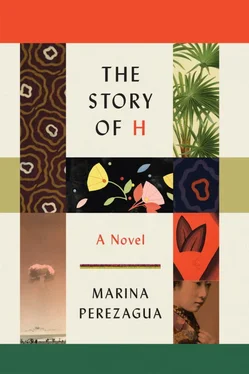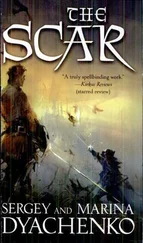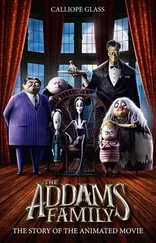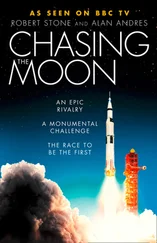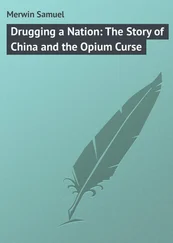* * *
The Japanese never respected the Geneva Convention on the treatment of prisoners of war signed on July 27, 1929. It’s not so unusual as history would like us to believe. It’s true that for the Japanese, who exalt suicide over surrender, the value of a prisoner who would want to remain alive was below that of a street rat. But the states that actually respected the convention, despite having signed it, were the exception. Surely you must be perfectly aware of that already. I didn’t yet know when Jim explained the conditions he endured as a prisoner of war that destiny would tug me along by way of a string of fake international organizations to reach the crucial element for concluding this story. As the nursery rhyme goes, these treaties are like a spider’s web on which an elephant balances precariously, and when that elephant sees how it holds up, he asks another elephant to join him until finally the web breaks for the weight of so many overfed, irresponsible elephants/states.
Before arriving in Manila to be boarded on the Oryoku Maru, Jim had already been the victim of noncompliance with the Geneva Convention. He was one of the Allied prisoners of war the Japanese used to build the Burma Railway, which like the Oryoku Maru boasted a well-earned moniker: Death Railway. On June 22, 1942, construction was begun with slave labor: some 190,000 Asian workers and 55,000 Allied POWs. The British had already contemplated a Thailand–Burma railway when they governed Burma, but the terrain was so hard going that it had never gotten under way. When the Japanese invaded Burma in 1942, they decided to tackle this project to strengthen their presence there, meaning they had to secure the supply of matériel, which by sea was extremely dangerous, since it exposed them to Allied submarine attacks. On the other hand, the sheer numbers of Chinese and Allied POWs obliged them to find new ways to keep them under control, and what better solution than to use them as slave labor in this colossal undertaking.
The first 1,414 POWs died in record time, coinciding with the construction of 258 miles of tracks and eight steel bridges. This period was called the Speedo, though I’m not sure whether that was because of how fast the railway was built or how quickly those constructing it died. I have to check some of these statistics against the notes I took, as a faithful lover of one of those prisoners. But most of that data has somehow remained seared in my memory. I suppose it’s just one more contradiction the war triggered in me, that I could never memorize a telephone number but the sinister statistics of fallen ranks were somehow burned right into my brain. I don’t think my memory betrays me here. Not a single death more, not a single death less, the excruciating exactitude of my memory thanks to the bomb. The scrupulous mathematics of one corpse atop another.
Work in an environment like the Burmese jungle was gruesome. The Death Railway can be considered World War II’s largest concentration camp, the tracks of which basically cut across the entire country. A very long, skinny concentration camp, one that destroyed over two hundred thousand lives, superseded in its destructive power only by Auschwitz. The jungle conditions were nearly as awful as the treatment by the Japanese officers. Sixteen-to twenty-hour days in sweltering heat and humidity and monsoon rains; suffering from tropical ulcers and incurable diseases, plagued by mosquitoes, snakes, and fleas; enduring dysentery, malnutrition, torture, and cholera. The jungle versus man, a conflict to see which could be more lethal. There were also numerous casualties due to airstrikes by Allied forces who couldn’t distinguish the camps where their own people were interned. But at times the jungle and man came together to form alliances in which the jungle offered trees and men the idea of crucifixion. One of the few rites the Japanese took from Western tradition; as in Roman times, crucifixion became a habitual form of torture. A few crucified prisoners, Jim told me, held out as long as fourteen days because the Japanese kept giving them just enough water and food to prolong their suffering. The torture extended to the other workers, who were forced to listen to their companion screaming in agony.
THE PEACE THAT CAME after Hiroshima’s destruction brought a sense of hope and promise. Surely you understand that I was a gullible adolescent then, and that’s what I wanted to believe. How far I’ve come from that credulity, that youthful ability not only to forgive but to forget. I imagine resentment is a gene that comes into play like a survival instinct, the same as other necessary mechanisms such as the desire for copulation. A gene that activates over time and only under specific circumstances. Yet animals live resentment-free. Our capacity for annihilation has become so great that it has planted a sentiment in us that is meant to keep us from falling prey to ourselves: our ability to exterminate. I’m not privy to the mysteries of genetics. But at some point along the way humans have become absurd creatures. Our genome is made of negative genes melded with positive ones. Before we’ve spent even two decades on earth, that contaminated information becomes rooted and can never be changed. It’s all fused together inside and we can’t separate the good from the bad.
As I said, the youngest of us were able to rustle up a new sense of hope. Twenty-five girls were chosen after the war to travel to the United States for reconstructive plastic surgery, in an attempt to mitigate the disfiguring effects of the bomb. They were called the Hiroshima Maidens. I was jealous of them. I followed their every move on television, I watched them exit the airplane, demurely, heads lowered, welcomed with bouquets of flowers in a country that was trying to return the smiles it had just ripped off their faces. I wanted them to choose me, though they would never have admitted me. Yet the images of those twenty-five maidens encouraged me to start saving my money. So I salted away all the money I was given, and once I reached employment age, I worked as many hours as I could, thinking of all the operations I would eventually pay for myself. A few basic facial touch-ups, but more significant, the reconstruction of my genitals.
Many years later, I still bear some of those scars. You’ll see them when I turn myself in. Without makeup. Like the gummy red keloid scar on my cheek in the shape of Africa. The bomb branded Africa onto my face. Who would ever have thought that a continent I’d thought so little about in my life, a place so radically different from where I was born, would become the place of Jim’s hopes and mine for such a long time. Africa was on my face, yes, and I was enclosed within its contours and tucked away in this borrowed cabin while I write this, my last testament.
The scar, being so visible, was a constant source of problems at first. For a long time such scars were unmistakable in Japan. Because of them, and because people were afraid of radiation sickness, survivors became outcasts. Nobody would hire us, and the marriage agencies, which arranged many matches back then, rejected survivors looking for a husband or wife because everyone took it for granted that our children would be born with defects. I remember when my cousin was pregnant. Instead of swelling, her belly began to shrink in her sixth month. It was as if her womb decided to rethink the whole thing and started taking steps backward from fetus to sperm and finally that much-longed-for flatness prior to gestation.
AT FIFTEEN, I was adopted by a family and finally landed in the occupying country, as if the bomb and I were two arms of the same boomerang on its way back to the hand that had thrown it. My new friends at school wanted to be football players, astronauts, and teachers. All I wanted was to be a grandmother, but the doctors told me the effects of radiation would eventually manifest themselves, likely sooner rather than later. Besides the elective surgical procedures, I underwent others that were life-and-death, and even today I still come down with new illnesses. I’ve learned how to let them in the door silently, cup of tea in hand, as serene as if each one were the last. I welcomed all illnesses except one: infertility, the absence that took my womb like a presence. A loss as real as the iron purged from my body with every menstruation, periods that ceased only to come back a few years later with no medical explanation one way or the other. Loss, the negated child, showed up between my legs; in panties that for months or years showed not a trace of blood, or the opposite, a red, saturated sanitary napkin flushed down the stygian drain into which the dead and the unborn disappear in equal measure.
Читать дальше
